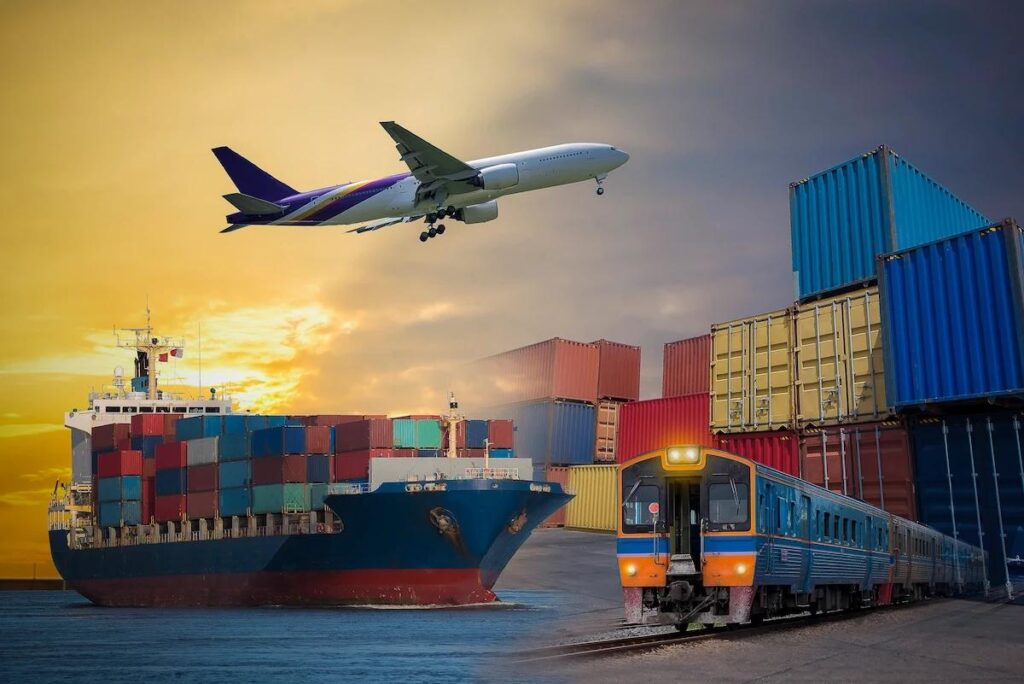- By Della tj
- October 30, 2025
- Sea Freight, Shipping
Table of Contents
Shipping goods efficiently and cost-effectively is crucial for global trade. Choosing reliable sea freight from Shenzhen to France ensures stability, cost control, and timely delivery for importers and exporters. This guide explores everything from costs and documentation to real shipping cases that reveal how businesses benefit from reliable logistics solutions.
Why Choose Reliable Sea Freight from Shenzhen to France?
Sea freight remains one of the most trusted methods for international logistics between China and France. It accommodates large cargo volumes, reduces per-unit costs, and provides flexible shipping schedules.
Moreover, reliable sea freight ensures cargo tracking, customs transparency, and reduced risk of delays.
| Factor | Sea Freight | Air Freight | Rail Freight |
|---|---|---|---|
| Cost | Low | High | Medium |
| Transit Time | 25–35 days | 5–7 days | 18–22 days |
| Capacity | Large | Limited | Moderate |
| Best For | Bulk goods | Urgent cargo | Mid-sized shipments |

How Much Does Sea Freight from Shenzhen to France Cost?
Shipping rates vary based on the container type, cargo size, and port destination. However, costs are typically lower than air or rail freight.
| Container Type | Average Cost (USD) | Capacity (CBM) | Transit Time (Days) |
|---|---|---|---|
| 20ft FCL | $1,200–$1,800 | 33 | 28–32 |
| 40ft FCL | $2,200–$2,800 | 67 | 28–35 |
| LCL (per CBM) | $35–$55 | Flexible | 30–38 |
Example: A 40ft container loaded with furniture from Shenzhen Yantian Port to Le Havre, France, costs about $2,400 and takes 30 days via Maersk Line.
What Documents Are Required for Customs Clearance?
Proper documentation is vital for smooth customs clearance and avoiding penalties.
Here’s a complete checklist for France-bound shipments:
| Document | Description |
|---|---|
| Bill of Lading | Shipping contract between shipper and carrier |
| Commercial Invoice | Declares value, description, and seller/buyer details |
| Packing List | Lists contents, weights, and packaging type |
| Certificate of Origin | Confirms manufacturing country |
| Import License | Required for restricted goods |
| Customs Declaration | Filed electronically to French Customs (Douane) |
Without these documents, clearance delays or customs holds are common. Therefore, ensure they’re verified before departure.
Real Case Study
Case 1:Electronics Shipment from Shenzhen to Marseille
Goods: Consumer electronics (1,200 units)
Cargo Volume: 12 CBM (1.8 tons)
Shipping Method: LCL sea freight
Transit Route: Shenzhen → Singapore → Marseille
Freight Cost: $680 total
Transit Time: 32 days
Customs Clearance: Completed within 2 days
✅ Result: The shipment arrived on schedule, and the buyer benefited from consolidated cargo savings.
Case 2:Furniture Shipment from Shenzhen to Le Havre
Goods: Office furniture
Container Type: 40ft FCL
Route: Shenzhen → Hamburg → Le Havre
Transit Time: 33 days
Freight Rate: $2,350
Insurance: $120 for cargo valued at $50,000
Result: Cargo delivered damage-free with customs cleared in 48 hours.
This case highlights that sea freight, albeit slower, provides cost advantages for non-urgent shipments.
How to Choose the Right Freight Forwarder?
Selecting the right forwarder determines cost efficiency and reliability.
A good partner provides end-to-end visibility, flexible scheduling, and 24/7 customer service.
Key Criteria:
- Proven experience in Shenzhen–France trade routes
- Transparent quotations with no hidden fees
- Warehouse facilities near Shenzhen Yantian or Shekou Port
- Real-time shipment tracking
- Dedicated customs brokerage in France
Tip: Compare at least three freight forwarders before confirming your booking.
What Factors Affect Transit Time and Cost?
Transit time for reliable sea freight from Shenzhen to France generally ranges between 28–35 days. However, various elements can influence it:
| Factor | Impact |
|---|---|
| Port Congestion | Delays loading/unloading |
| Seasonal Demand | Affects freight rates |
| Customs Inspection | Adds clearance time |
| Weather Conditions | May delay vessel schedules |
| Shipping Route | Direct routes are faster |
Example: Shipping via Shenzhen → Rotterdam → Le Havre may take 3–5 days longer than direct routes due to transshipment delays.
How to Ensure Smooth Delivery Upon Arrival?
After the cargo arrives in France, several steps must be followed to ensure smooth delivery:
- Customs Clearance: Submit all documents through the French Douane portal.
- Inspection: Authorities may check product compliance and labeling.
- Payment of Duties: Pay import VAT and duties (based on HS codes).
- Local Delivery: Coordinate with a local transporter for door delivery.
Pro Tip: Using a DDP (Delivered Duty Paid) arrangement allows the freight forwarder to handle customs and taxes on your behalf.
Conclusion
In summary, reliable sea freight from Shenzhen to France offers unmatched value for businesses managing bulk shipments. With accurate documentation, a trusted forwarder, and smart route selection, you can save costs and ensure timely deliveries. Whether shipping electronics, furniture, or general goods, sea freight remains the cornerstone of global logistics — balancing affordability with dependability.
Request a Quote
Need a tailored solution for your shipping from China?
Let TJ China Freight Forwarder assist you with reliable, cost-effective service.
FAQ:
Q1.How long does sea freight from Shenzhen to France take?
Transit time usually ranges from 28 to 35 days, depending on route, vessel schedule, and port congestion.
Q2.What are the customs charges for importing goods into France?
Import duty and VAT rates vary by HS code, but generally range between 5%–20% for most commodities.
Q3.Can I ship small cargo by sea freight?
Yes. LCL shipping is perfect for small shipments, allowing you to share container space and reduce overall logistics costs.
Q4.What is the cheapest way to ship from Shenzhen to France?
LCL sea freight is the most affordable option for smaller loads, while FCL offers better value for large volumes.
Q5.Are there restricted items when shipping to France?
Yes. Items like chemicals, lithium batteries, and perishables require special permits and handling compliance.

